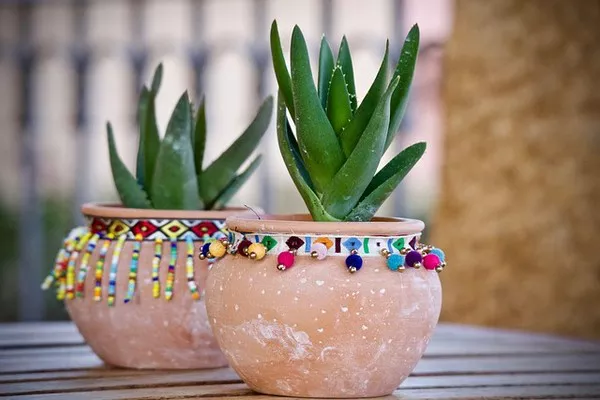Succulents, renowned for their captivating array of shapes and colors, have become increasingly popular as indoor and outdoor ornamental plants. With their ability to thrive in arid conditions and minimal care requirements, succulents are an excellent choice for both seasoned gardeners and beginners alike. However, successful succulent planting and care necessitate a nuanced understanding of their unique characteristics. This comprehensive guide offers valuable insights to ensure that your succulents not only survive but flourish.
Choosing the Right Succulents
Before delving into the planting process, it is essential to choose the right succulents for your environment. Succulents come in a wide range of sizes, shapes, and colors, each adapted to different light and temperature conditions. Research and select succulents that are well-suited to the light levels and climate of your location.
Selecting the Perfect Container
Choosing an appropriate container is just as important as selecting the succulents themselves. Opt for containers with drainage holes to prevent water from accumulating at the bottom and causing root rot. Porous materials such as clay or terracotta allow excess moisture to evaporate more effectively. The size of the container should accommodate the growth of the succulent for at least a year.
Selecting the Right Soil
Succulents require well-draining soil to prevent waterlogged roots. A recommended mix combines regular potting soil with coarse sand or perlite to enhance drainage. Avoid using garden soil, as it tends to retain too much moisture. Pre-packaged succulent-specific soils are also available, ensuring an optimal balance of nutrients and drainage.
Planting Process
Prepare the Container: Fill the container with the prepared succulent soil, leaving enough space for the succulent’s root ball.
Remove the Succulent Gently: Carefully remove the succulent from its nursery container, taking care not to damage the roots. If the roots are tightly wound, gently loosen them to promote healthy growth.
Planting Depth: Place the succulent in the container at a depth that allows the lowest leaves to sit just above the soil level. This prevents the leaves from rotting due to direct contact with the soil.
Backfill and Tamp: Fill the container around the succulent with the prepared soil mix. Gently tamp down the soil to eliminate air pockets and provide stability to the plant.
Initial Care
Watering: Unlike most plants, succulents thrive when their soil is allowed to dry out between watering. Water the succulents thoroughly but infrequently. A general rule of thumb is to water when the top inch of soil feels dry to the touch. Overwatering is a common mistake that can lead to root rot.
Light: Succulents require ample sunlight to maintain their vibrant colors and compact growth. Place them in a location that receives bright, indirect sunlight for most of the day. If growing indoors, a south or west-facing window is usually ideal.
Temperature: Succulents generally prefer temperatures between 60°F to 80°F (15°C to 27°C). They can tolerate slightly cooler temperatures, but prolonged exposure to frost should be avoided.
Fertilizing: During the growing season (spring and summer), you can provide your succulents with a diluted, balanced fertilizer every 4-6 weeks. However, avoid fertilizing during the dormant winter months.
Pest and Disease Management
Succulents are relatively hardy plants, but they can still fall victim to pests and diseases. Common pests include mealybugs, aphids, and spider mites. Regularly inspect your plants for any signs of infestations, such as discolored or distorted leaves. If an infestation is detected, isolate the affected plant and treat it with appropriate insecticidal soap or neem oil.
Transplanting and Repotting
As succulents grow, they may outgrow their containers, becoming root-bound or crowded. Transplanting them into slightly larger pots every 2-3 years helps ensure their continued health and vitality. The process is similar to the initial planting steps, with added care to avoid damaging the roots.
Conclusion
Succulents, with their captivating aesthetics and low-maintenance requirements, are a perfect addition to any garden or indoor space. By selecting the right succulents, containers, soil, and following proper planting and care procedures, you can enjoy these fascinating plants for years to come. Remember, the key to successful succulent cultivation lies in understanding their unique needs, including light, water, temperature, and protection from pests. With a little attention and care, your succulents will thrive and become a source of pride and beauty in your botanical collection.


